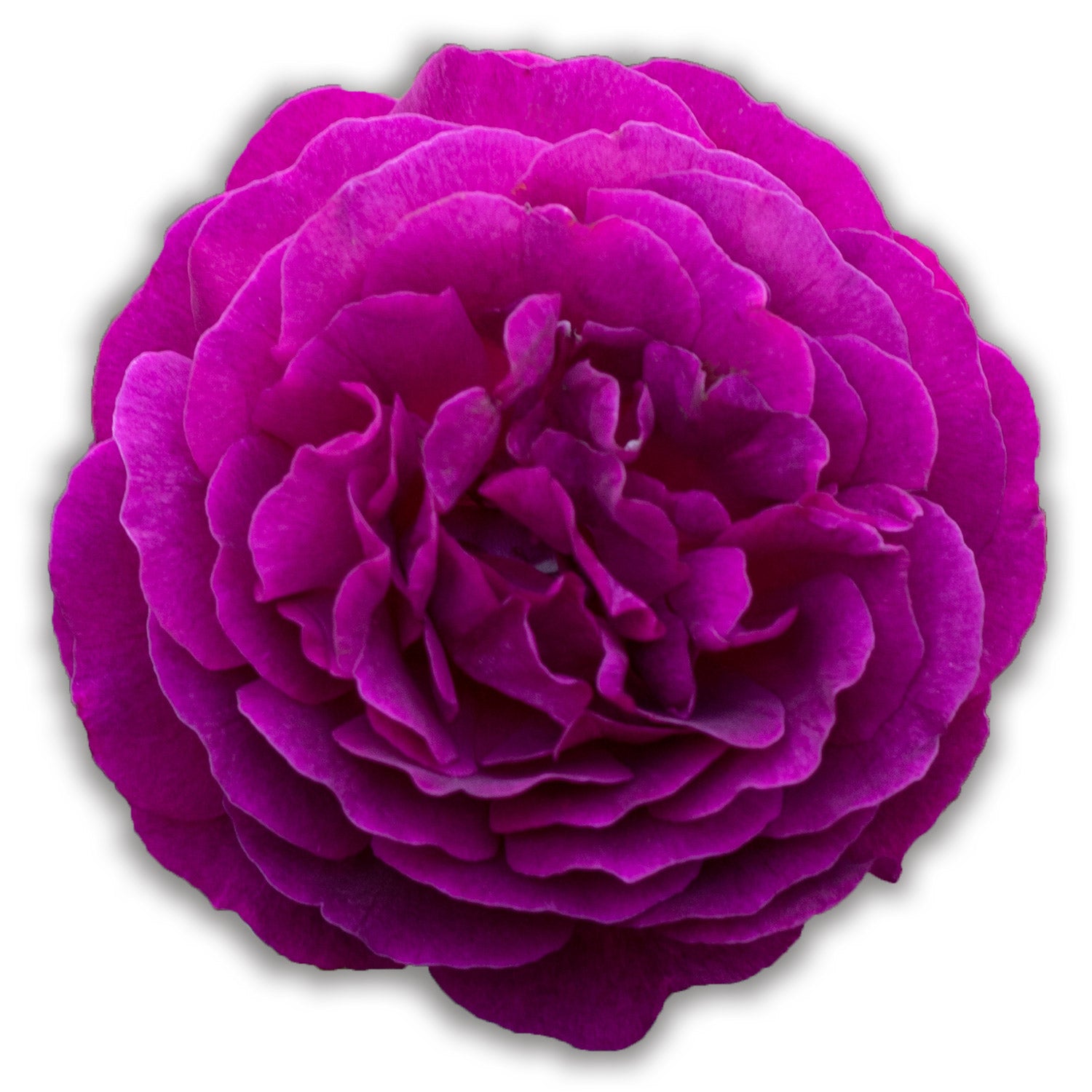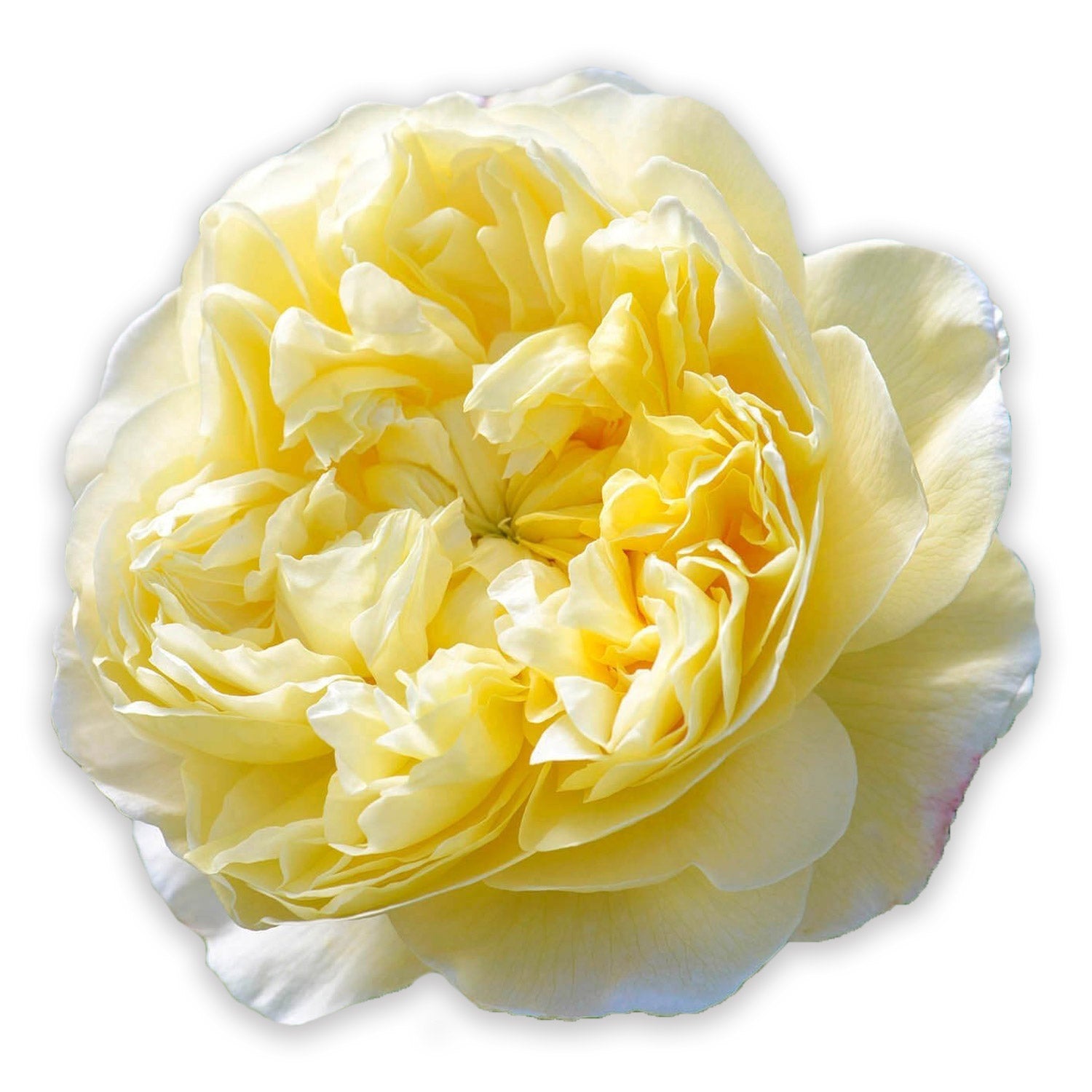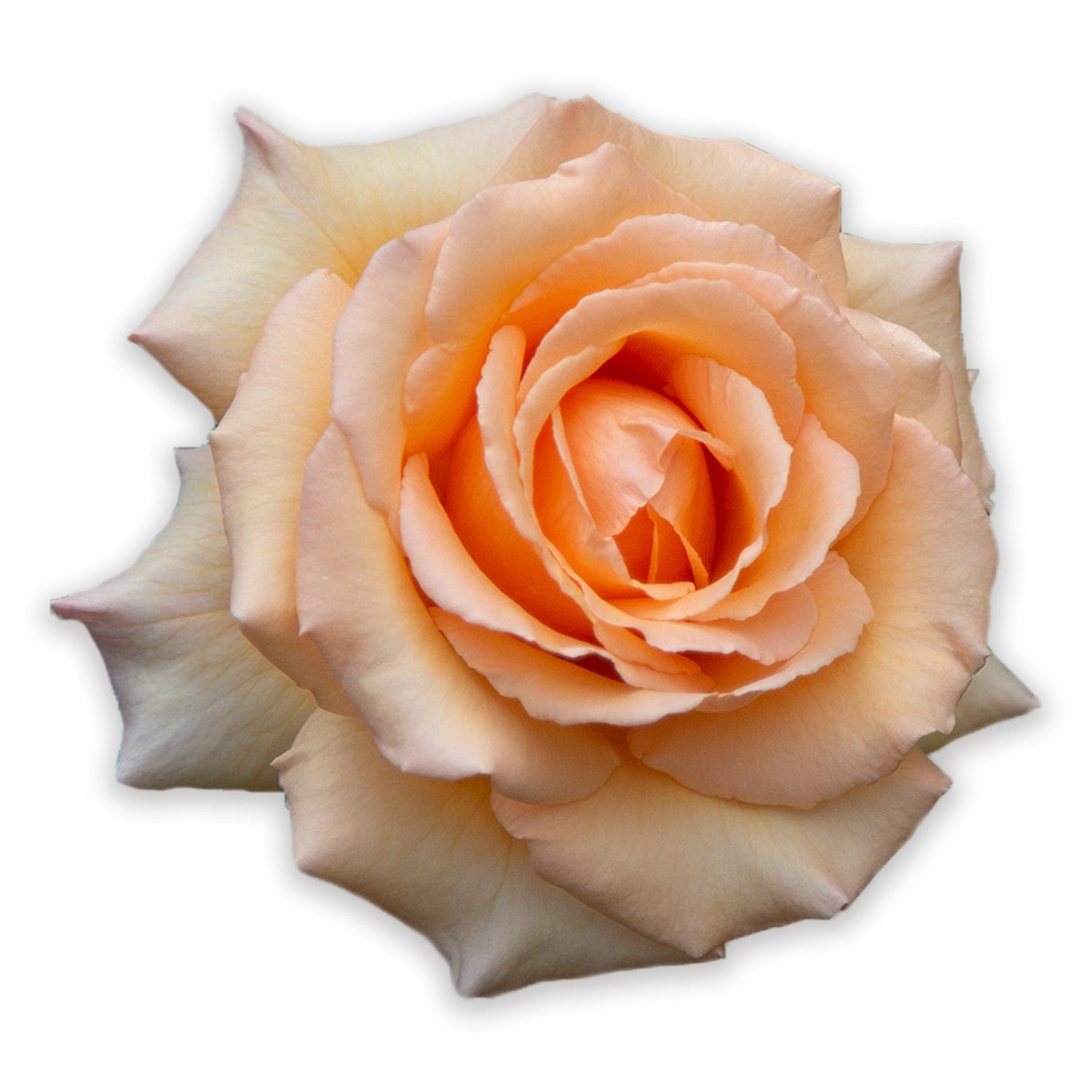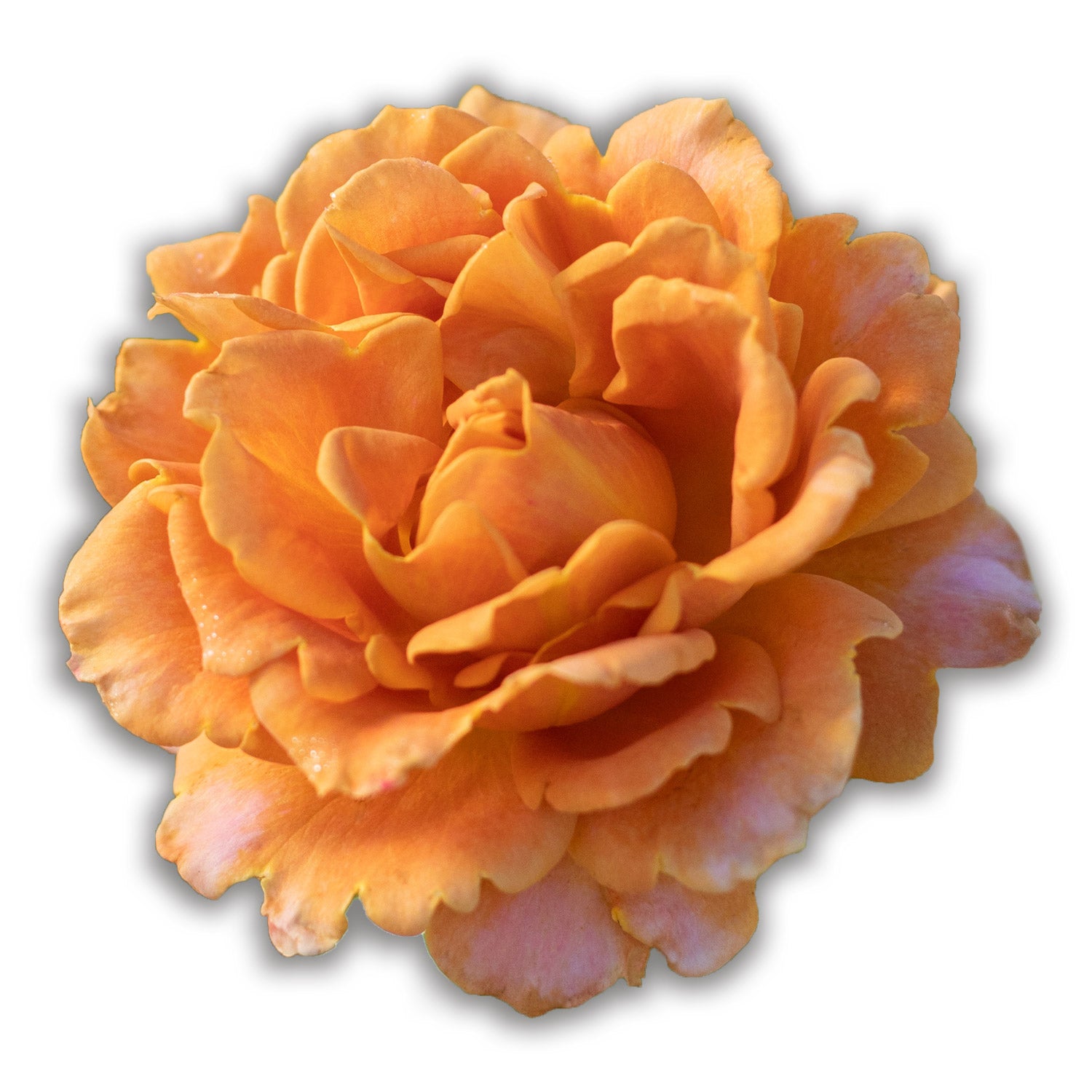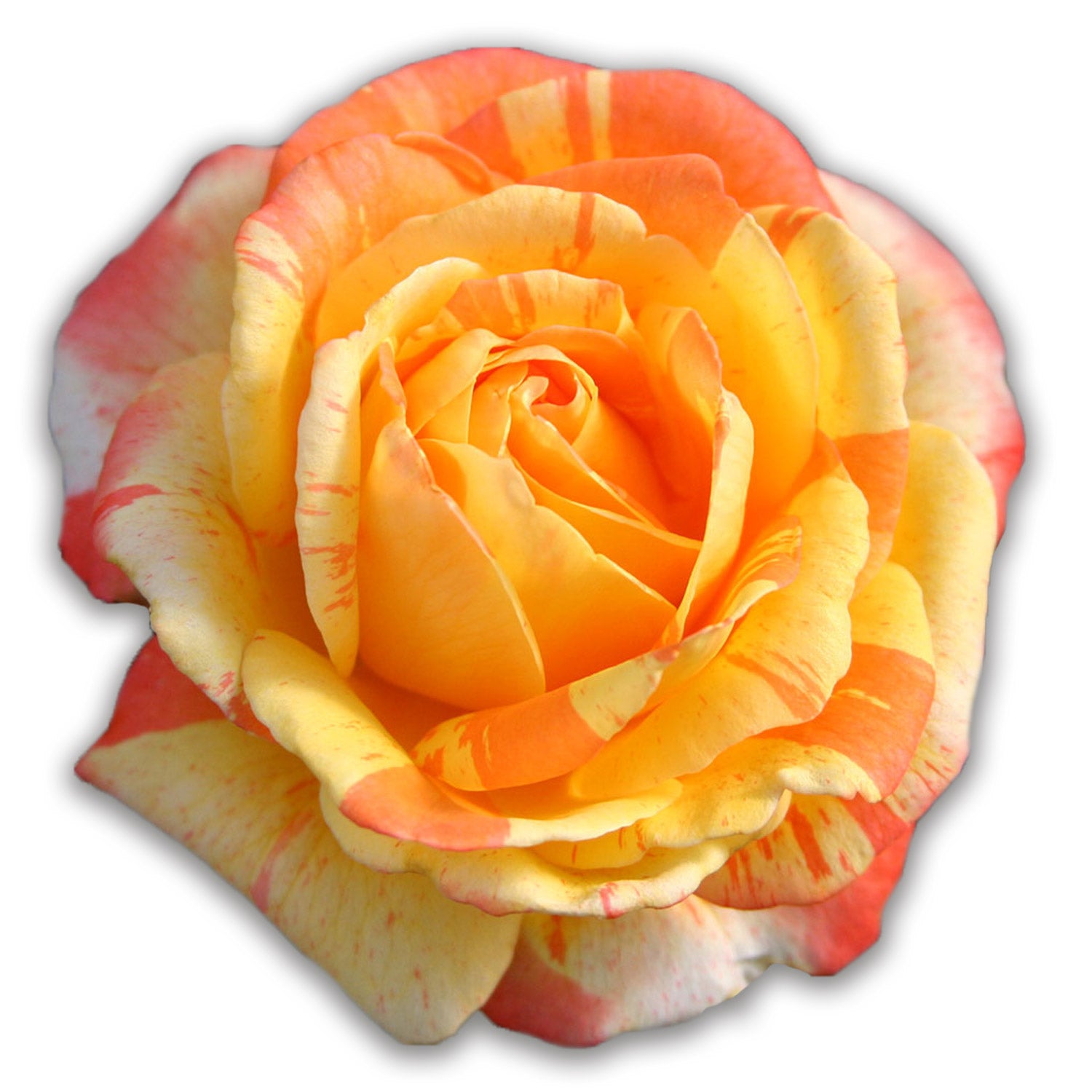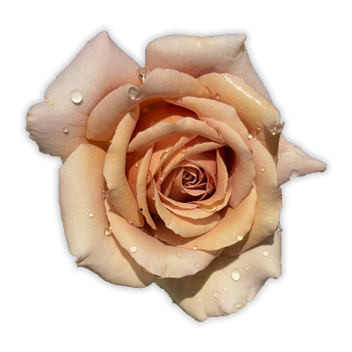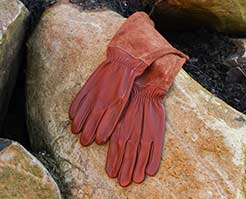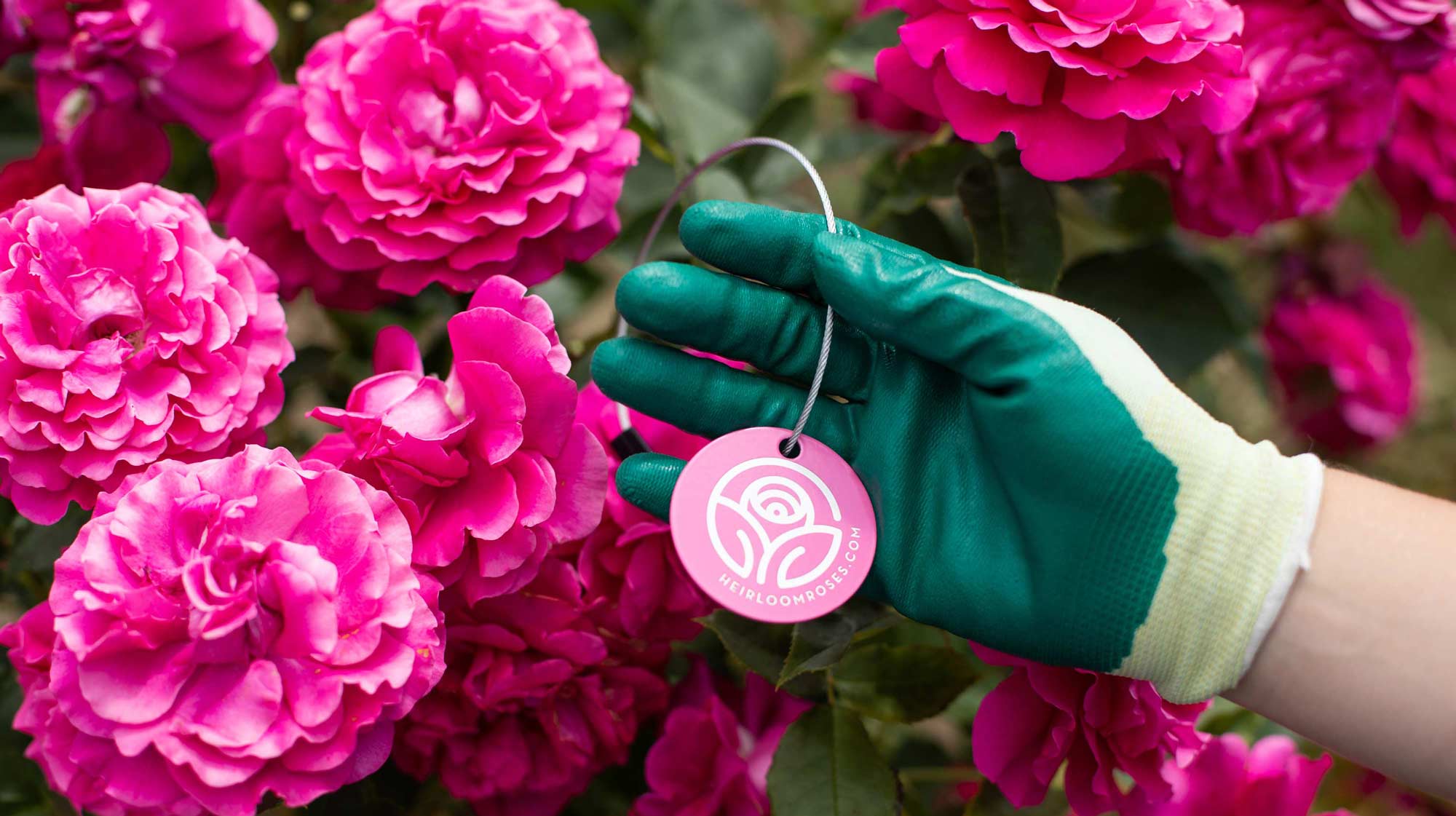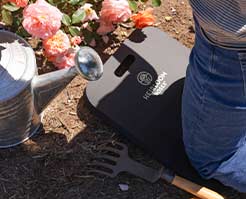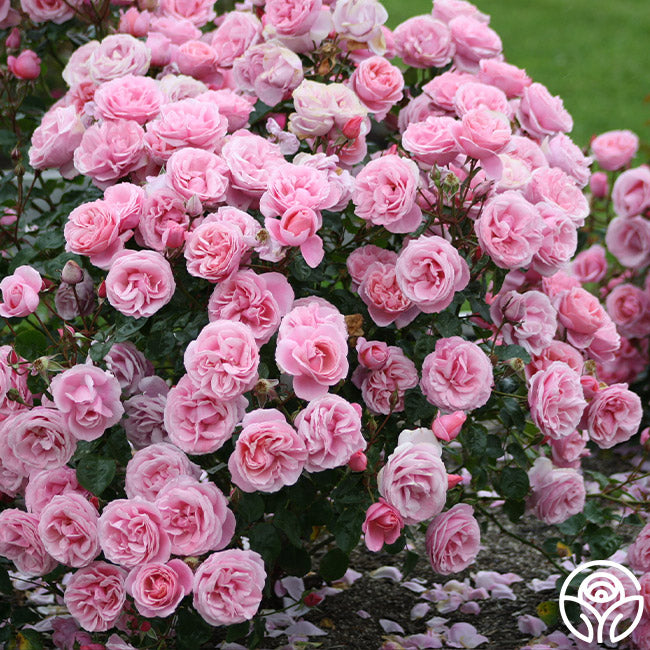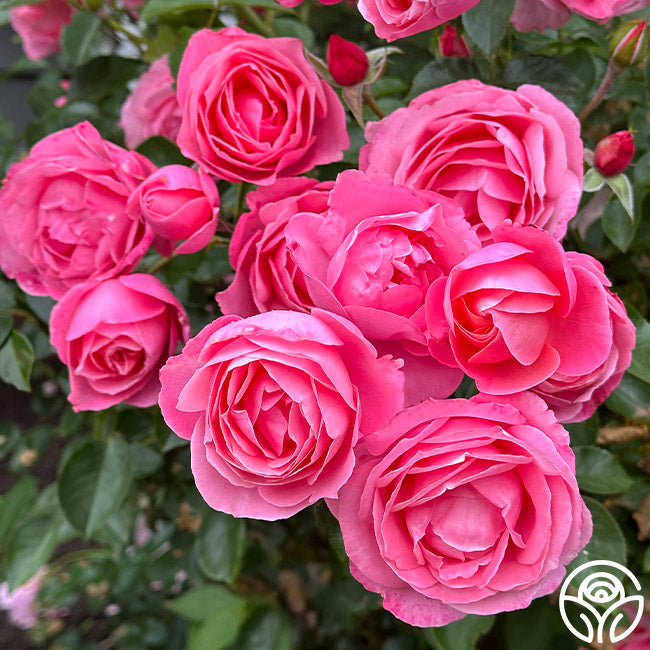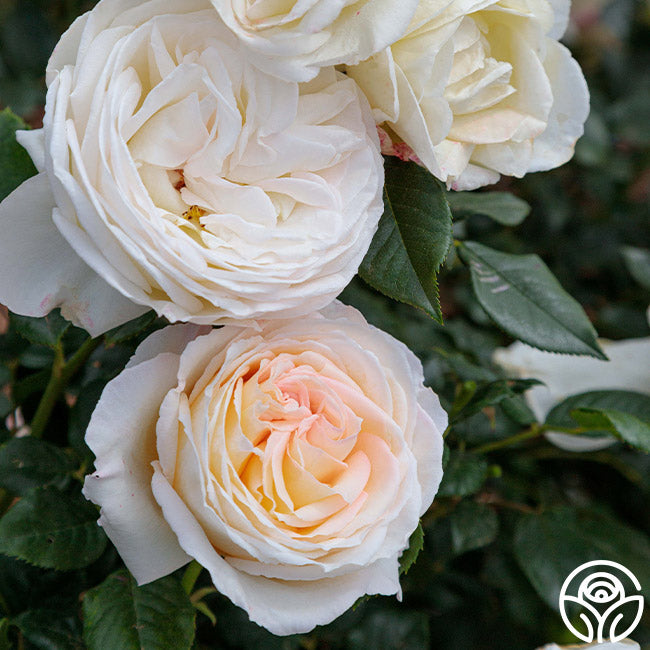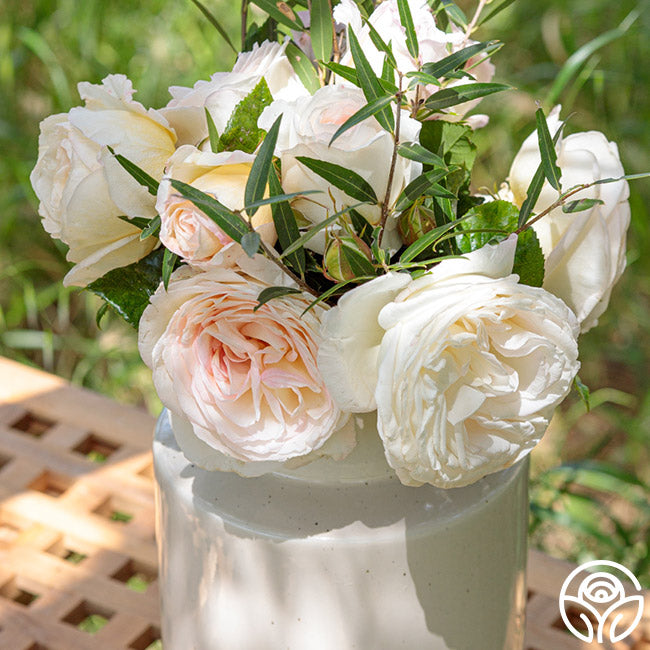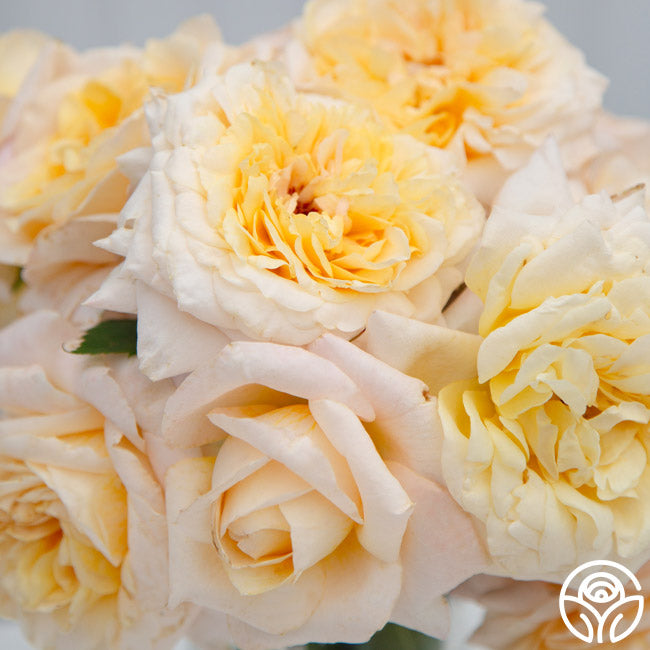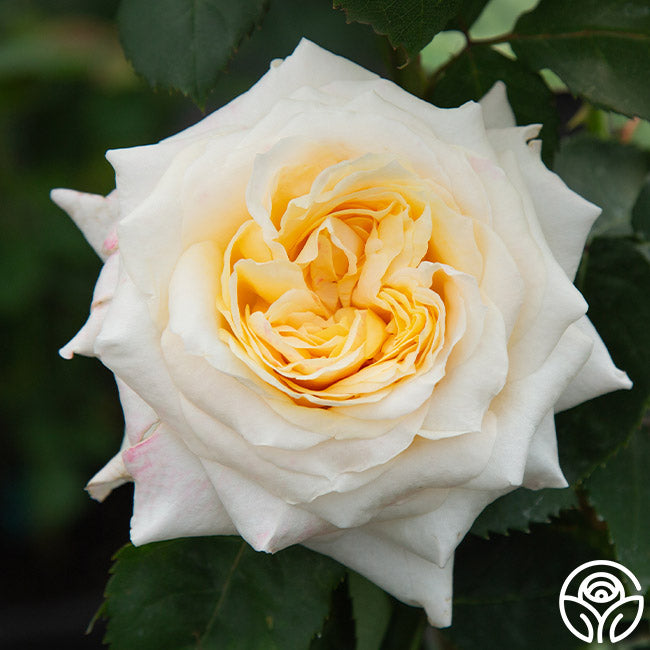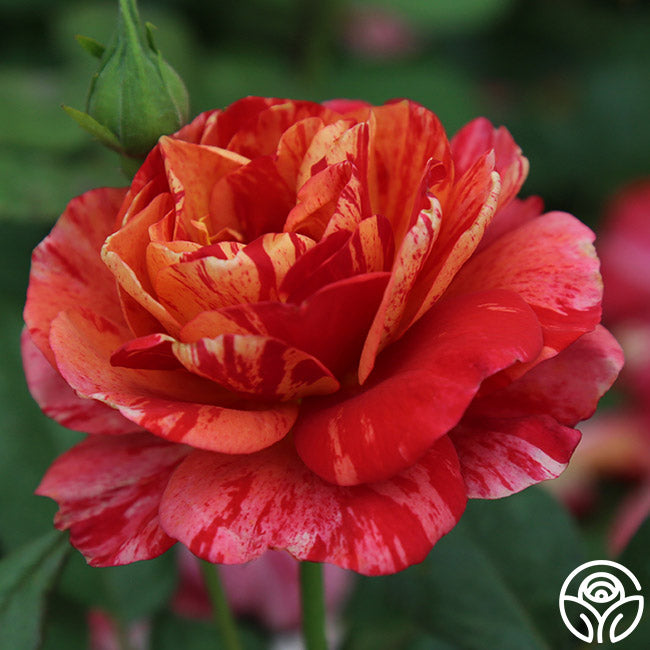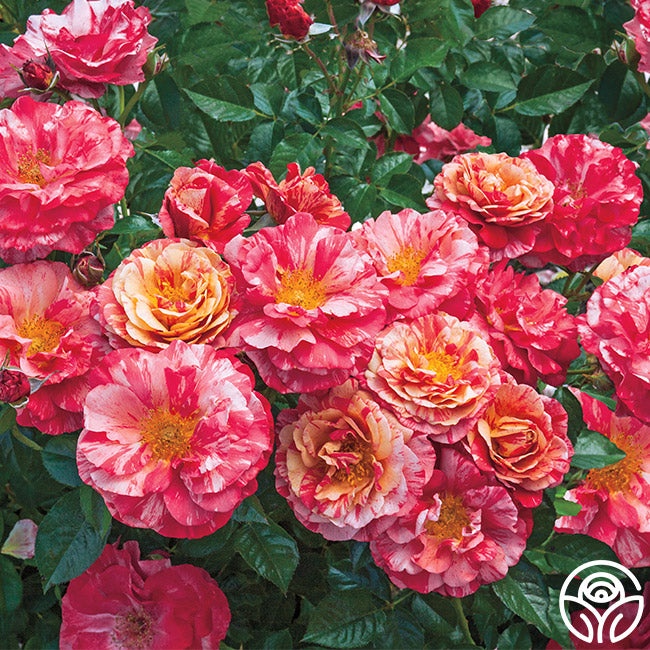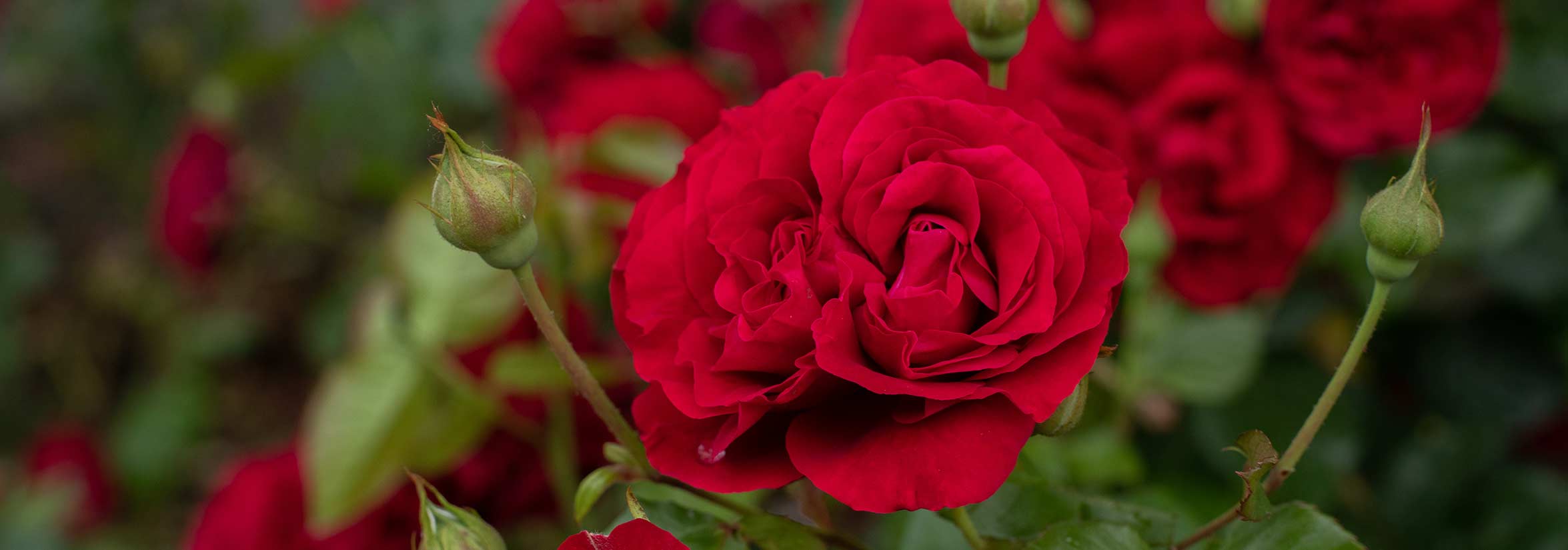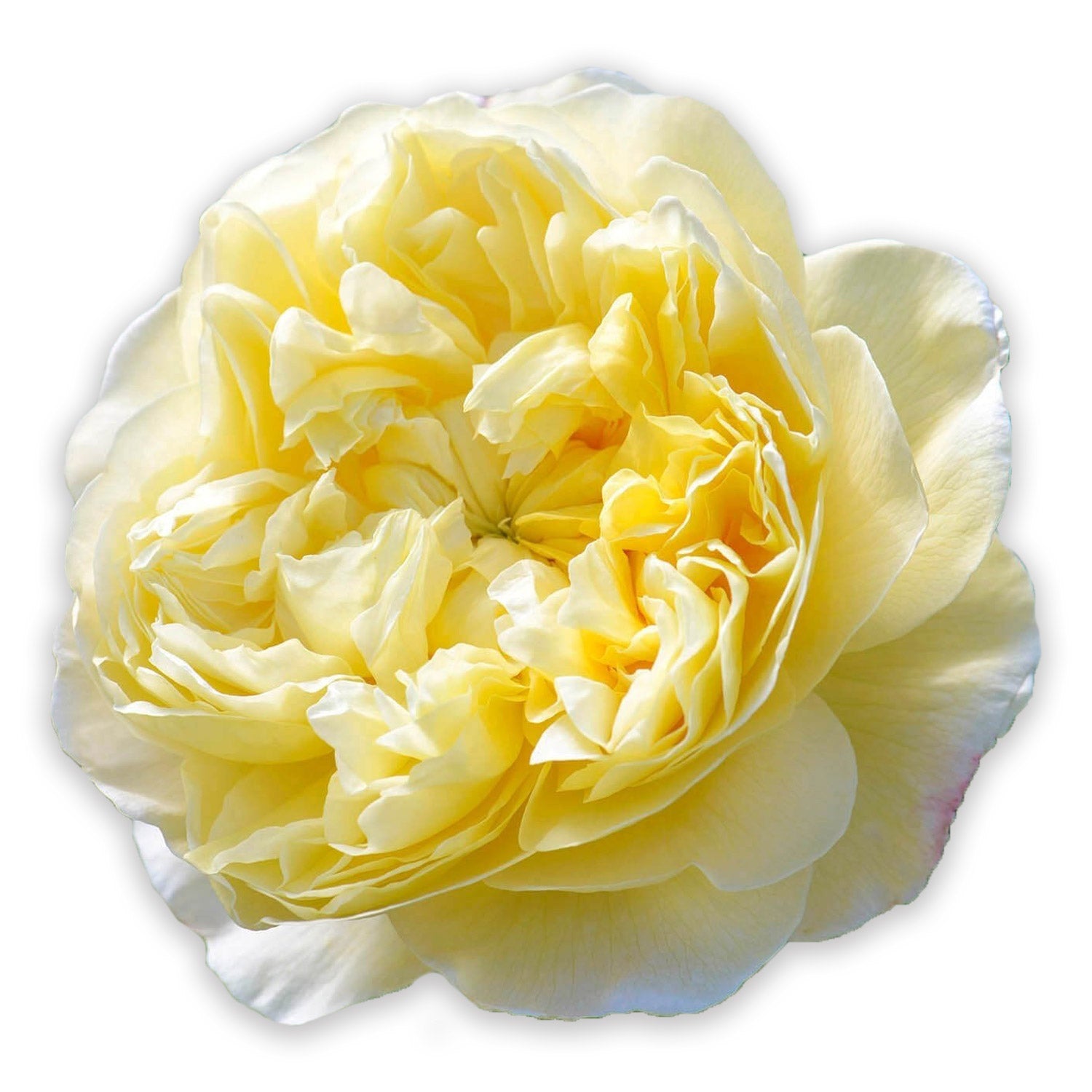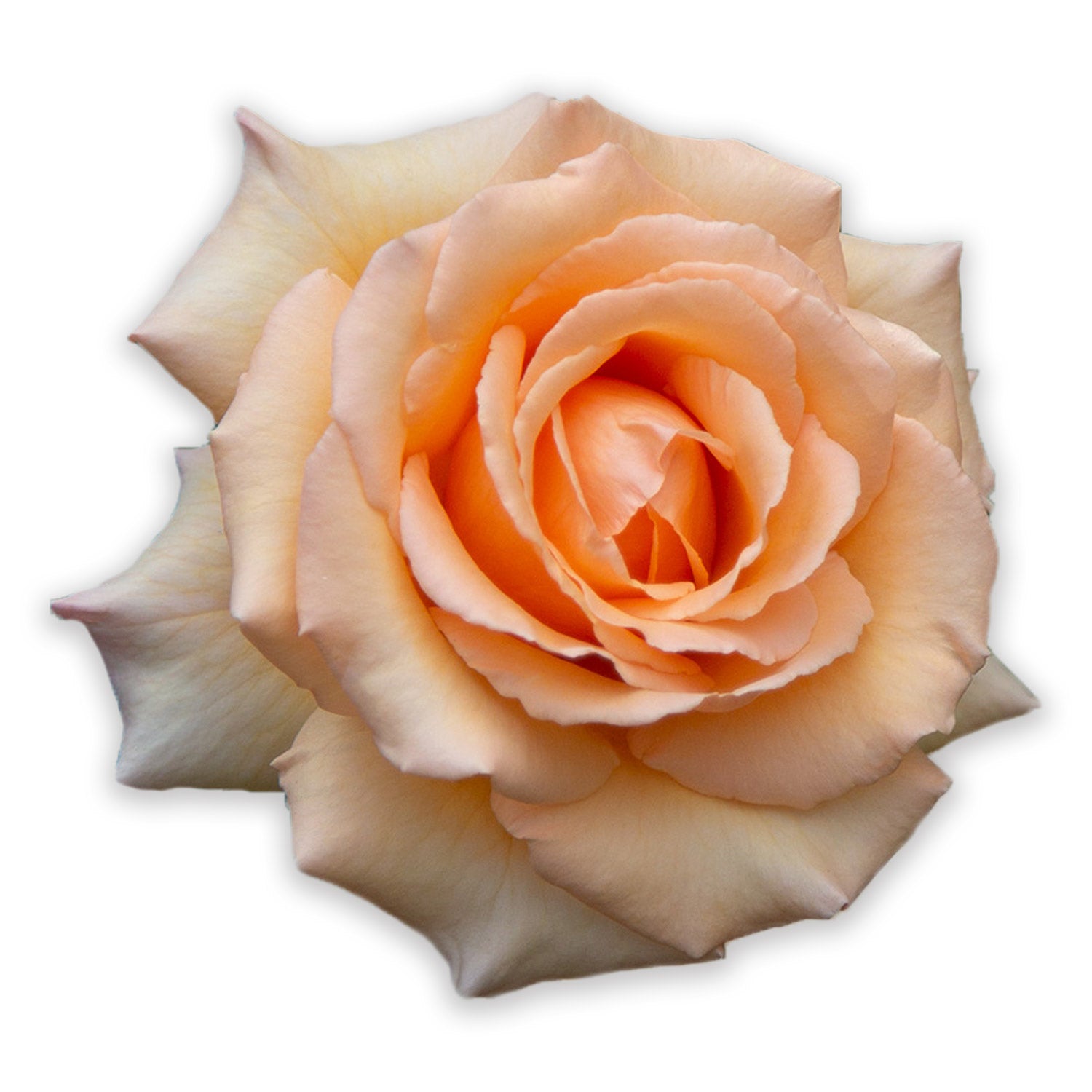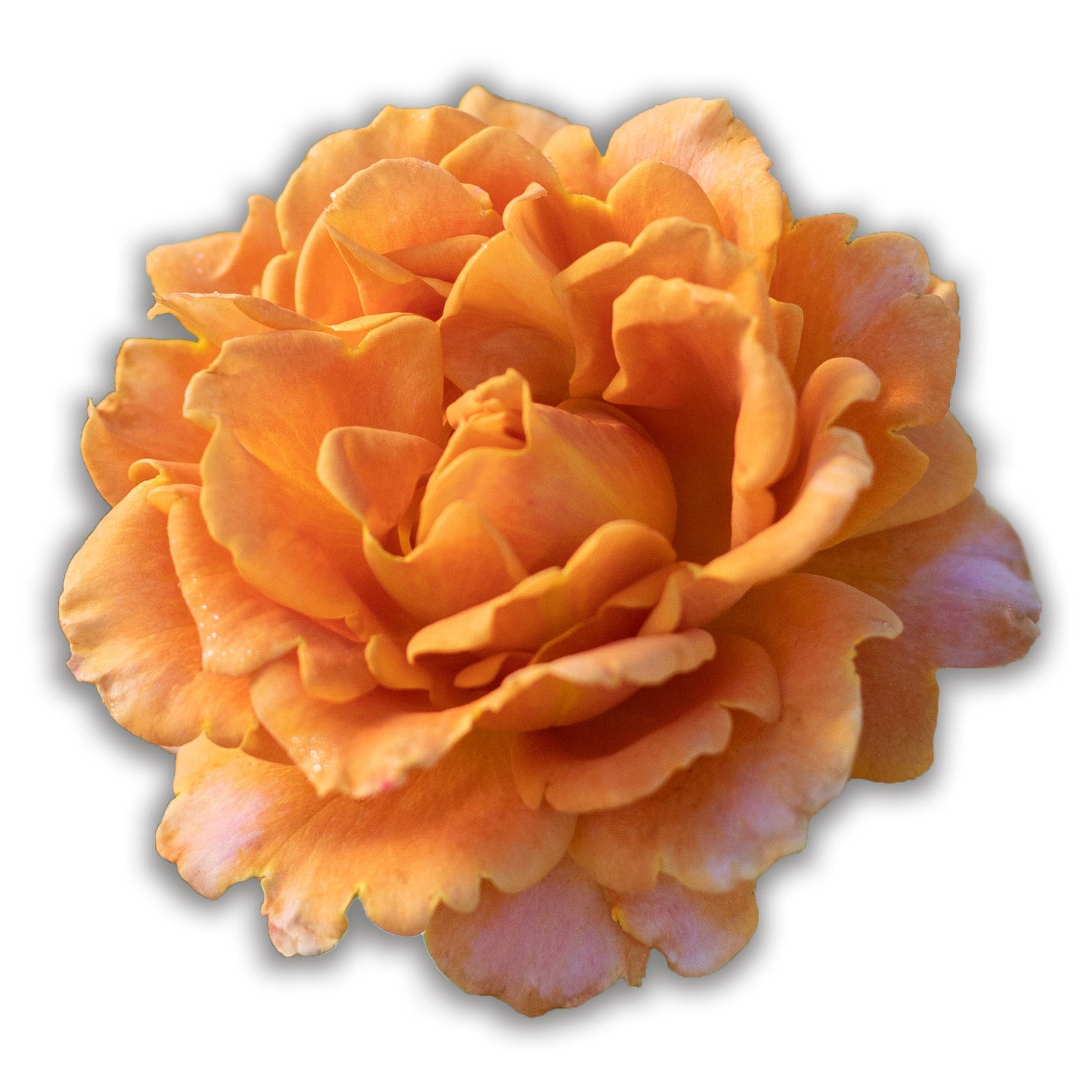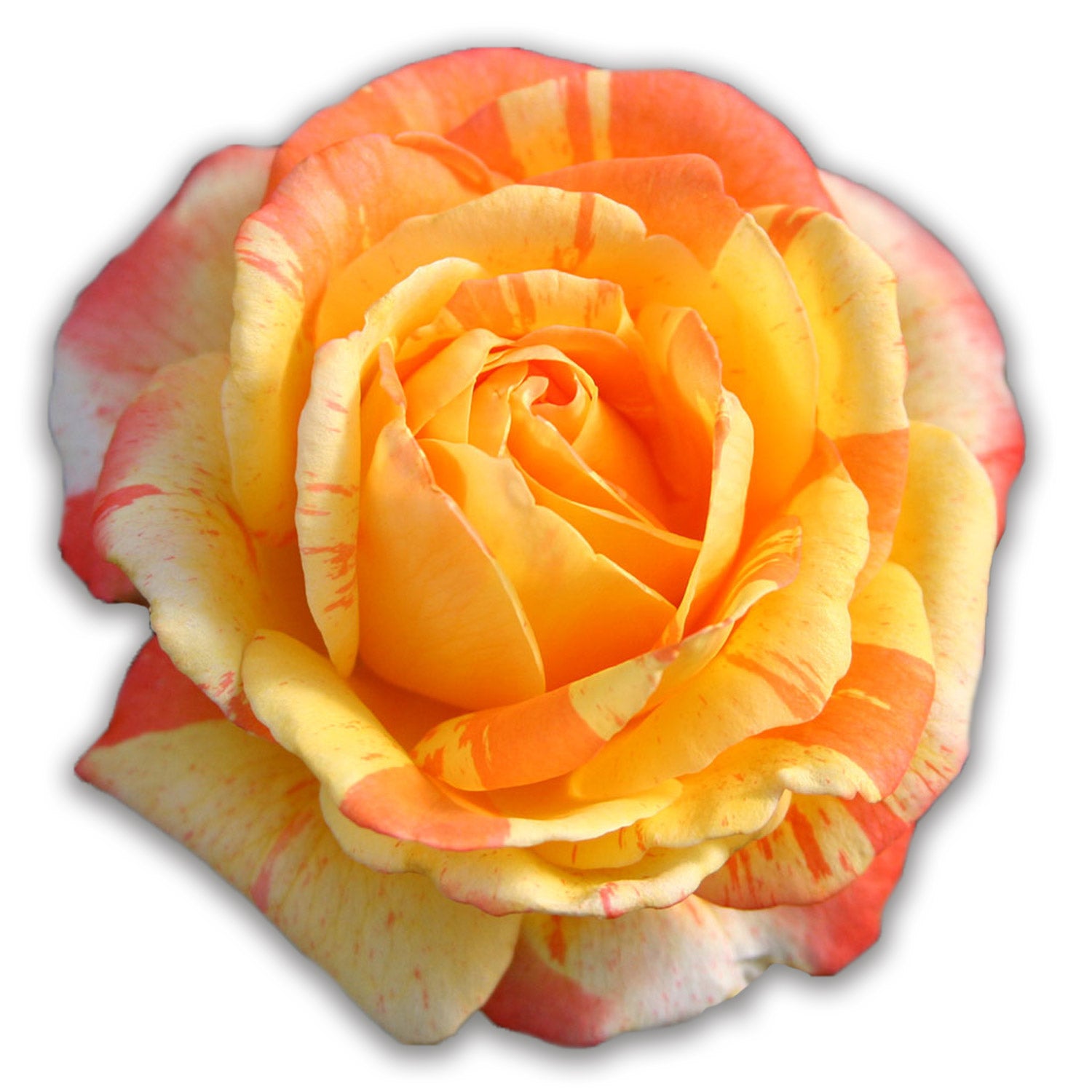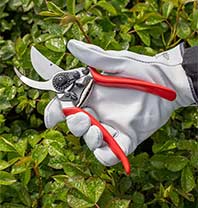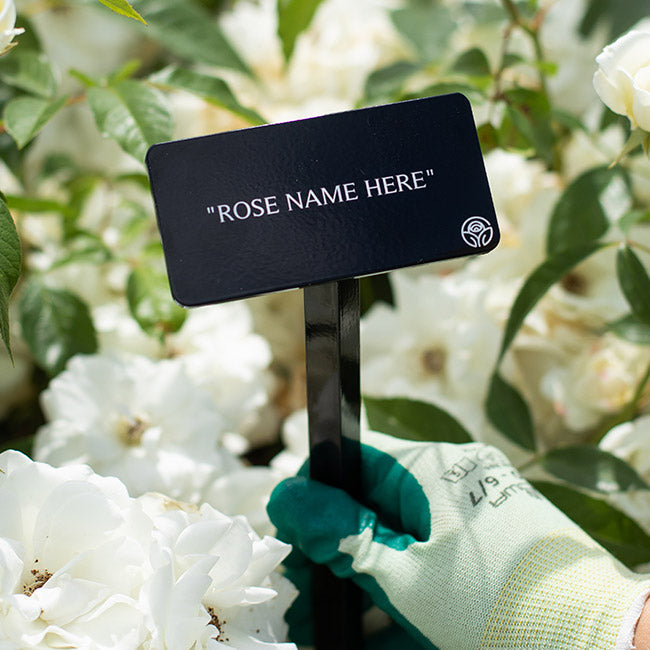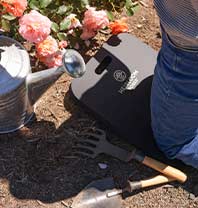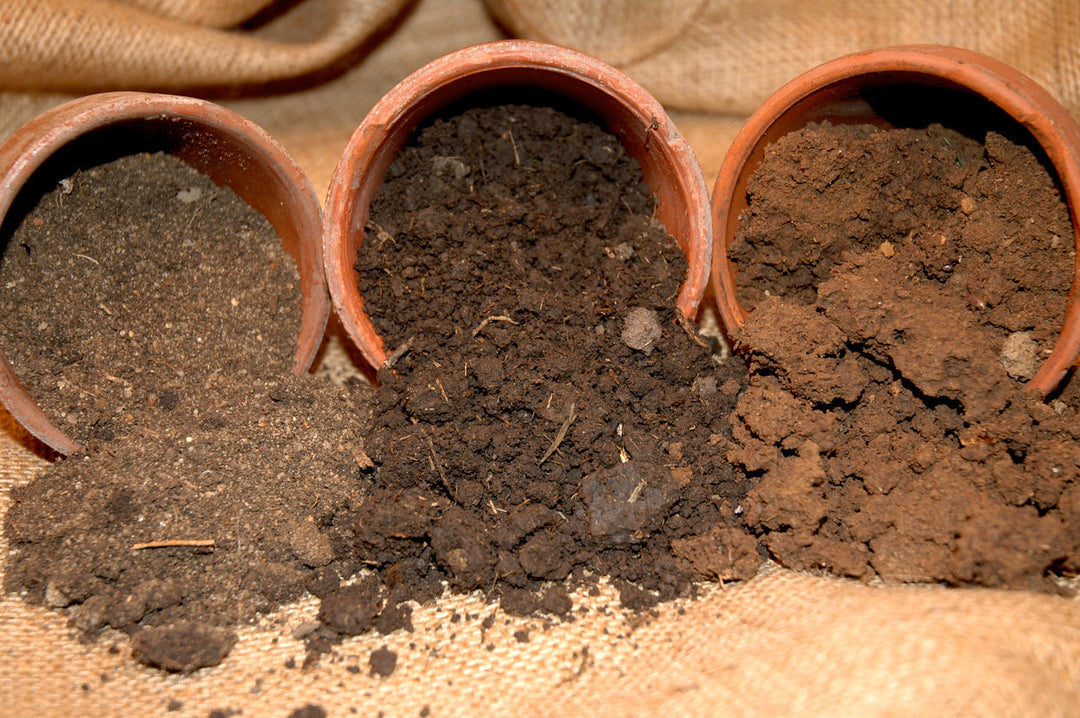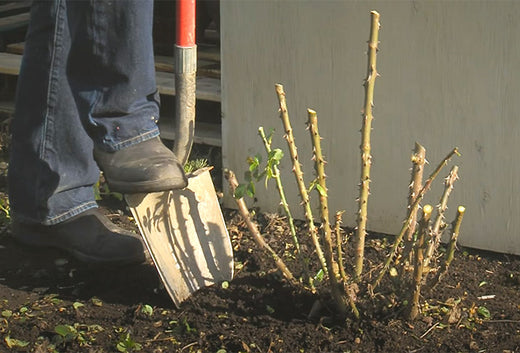Rootstock
Rootstock is a portion of the stem and root system onto which a scion or bud eye has been grafted. Rootstock is also referred to as understock.
Why Rootstock is Important to Grafting
The most common way to propagate roses is through grafting, a practice whereby a bud-eye or cutting of a rose is inserted into a rootstock of another variety.
- First, a mature rootstock plant is grown.
- T-shaped holes are cut in an area of the bark.
- A bud is placed into the cut and is then wrapped securely until roots are set into the bark.
- Once the graft takes, the upper branching of the rootstock is cut off, leaving only the grafted buds to grow, forming a new bush.
This method of propagation is fast and inexpensive compared to growing rooted cuttings. However, it comes at a price. The place where the bud has been added, called the crown or bud-union, is a weak area on the plant. A hard, freezing winter can easily damage the crown, leaving only the rootstock to grow. Rootstock has tendencies to sucker and revert to its natural state, creating a constant battle in the rose garden. Rootstock suckers must be continually pruned out to maintain the original rose.

Grafted Roses

Many people are unaware that the underground portion of their rose may be different from what they see above ground. That is, until an unusually cold winter kills the top growth. Come spring, a new rose with different flowers sprouts. Gardeners with grafted roses should be aware that if left unchecked, the rootstock (usually more vigorous) has the ability to strangle out the original rose bush.Two Roses in One
Grafting Pros and Cons
PROS:
- Grafting has been the primary method of producing roses ever since the first Hybrid Tea rose was introduced in the late 1800s. ‘La France’ had a beautiful bloom but the plant was weak.
- By budding it onto rootstock, it took on more vigor and budding soon became the method of producing the modern rose.
- This type of propagation provides more instant gratification (being sold at a larger size than own-root roses).
CONS:
- Grafted roses have a shorter life expectancy than own-root roses.
- Over time, a grafted rose will outgrow the bud union and need to be replaced. The bud union can become quite large, creating an unsightly “battle of the bulge.”
- Grafted roses have less winter hardiness and disease resistance and they are more susceptible to rose viruses.
- They have a tendency to sucker.
For hundreds of years, home gardeners have been propagating their own roses by taking cuttings and growing them on their own roots. With Heirloom Roses, gardeners can enjoy the many benefits own-root roses have to offer without having to worry about rootstock.
Beware of Imposters!

There are a number of rootstock plants used, depending on the company growing the rose and where in the country it will be sold. If one of your roses is behaving differently and growing out of control, you probably have an imposter - it has reverted to rootstock. The most commonly used rootstock is Dr. Huey, it has a long budding season, stores well when bare-rooted, and does well in all parts of the country.
Some roses used as rootstock are:
| Fortuniana | Used mainly in warmer parts of the country. Fortuniana is very vigorous, does well in sandy soil, but is not extremely cold hardy. It is tolerant to nematodes, which are pests that invade the roots and are common in Florida. |
|---|---|
| Manetti | This light pink Noisette is used extensively at companies in California. Manetti has more flexible roots that do not break as easily as Dr. Huey. |
| Multiflora | Has a tendency to pick up salts and is not happy in alkaline soil. This particular rose is very susceptible to virus. |
| Dr. Huey | The most commonly used rootstock. It has a long budding season, stores well bare-rooted, and performs consistently in all parts of the country. |
| De La Grifferaie | Used for “standards” or “tree roses” as an inner stock between Dr. Huey and the grafted rose. |
| Odorata | Often used when grafting is done at the same time rooting of the plant takes place. Very prone to sucker and crown gall. |




